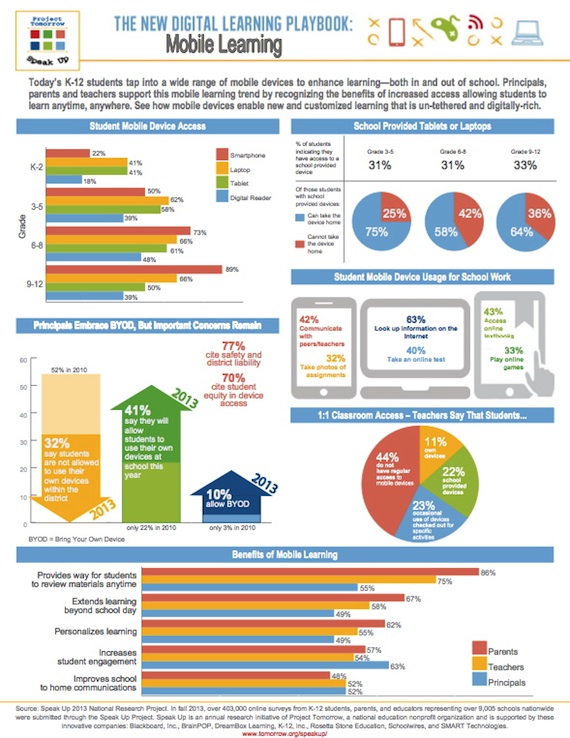Big Data and Privacy
April 17, 2014
Big data has been generating big hype for a while. In January, the White House jumped into the fray, launching a big data and privacy review. CDT participated in all three public workshops convened in connection with the review and submitted written comments.
CDT’s Big Data and Privacy Comments
In our comments, we focused on three main areas: applying the Fair Information Practice Principles (FIPPs) to both private sector and government big data programs; exploring technical measures such as de-identification to safeguard privacy; and reforming existing privacy laws, most notably the Electronic Communications Privacy Act, to account for rapid changes in the ways that digital data is collected, stored, and used.
CDT stressed that, as entities collect more data to offer innovative products and more efficient services, they must still be guided by purpose specification, consent, security, and the other elements of the FIPPs framework.
Government and Big Data
| “Strong consensus is forming that the bulk collection of phone records should end.”
-Harley Geiger
|
The Administration says that it will end its bulk collection of telephony metadata, although the details of what will replace it remain unsettled. Meanwhile, CDT is pointing out that the laws the government has used to justify bulk collection are not limited just to phone records. Instead, they could be used to justify collection of location data, Internet browsing history, financial records, and more. CDT has been vocal in advocating the end of all forms of bulk collection, and we endorse the USA FREEDOM Act as the best legislation to do just that.
A report from the White House review is due before the end of April, but it is expected to present more questions than answers. In this complex and unsettled space, CDT will continue to work with companies and other stakeholders to develop workable approaches that will protect privacy while pursuing the benefits promised by advanced data analytics. |
Check Out CDT’s New Website
CDT has launched a totally revamped website: http://www.cdt.org. It has a fresh new look and tools that should make our content more easily accessible. Thanks to our partners at iStrategy Labs for their creative and technical efforts on the new site.
The Year Ahead: 5 Social Media Trends Every Entrepreneur Needs to Know
http://www.entrepreneur.com/article/232738
#pm #techworkshop @scsulib290 @stcloudstate #evolving and #diversify are the 2 keywords from this entry
here are links to the tools:
http://www.creativebloq.com/infographic/tools-2131971, http://uplifted.net/marketing/top-3-free-generator-tools-to-create-an-infographic-online/, http://www.edudemic.com/diy-infographics/
http://piktochart.com/
http://infogr.am/
http://create.visual.ly/
Caitlin Bagley’s Slideshare presentation:
http://www.slideshare.net/ALATechSource/bagley-31849582
Establishing Credibility
The primary focus of using infographics is not to teach them how to create, but rather to
interpret dataTeach students not to fear numbers, and how to read it.Before we create, make sure we know how to read critically infographics
What are Infographics? Definition:
- they’re the merging of art and information on charts to highlight specific bits of information.
- Portmanteau of Information + Graphic
Data Sources: where do you get your data from?
From the library dbases:
http://stcloud.lib.mnscu.edu/subjects/guide.php?subject=REF&_ga=1.193545069.1129885410.1422389529
From the Internet:
US CensusStatistical Ready Reference (Data Planet)
Simmons OneView
S&P NetAdvantage
Tools: Piktochart, Infogr.am, Easel.ly
What do you want to achieve?
1.Learn about statistics resources at the library
2.Be aware of the ramifications of bad data.
High school policy is turning from banning mobile devices at school to acceptance of students’ mobile devices and integrating them into the learning process: BYOD (Bring Your Own Device)
How is higher ed addressing/integrating such evolution?

#m #techworkshop #BYOD in schools http://thejournal.com/articles/2014/04/08/a-third-of-secondary-students-use-school-issued-mobile-devices.aspx
See our IMS blog entry:
https://blog.stcloudstate.edu/ims/2014/04/08/3-learning-tools-of-the-future/
and
https://blog.stcloudstate.edu/ims/2014/02/18/google-glass-at-lrs/
I start testing GG several days ago and I am still in the stage of Jeff Jarvis : http://www.businessinsider.com/jeff-jarvis-on-google-glass-2014-2
The questions is: how to make GG applicable for our daily tasks at work?
GG can be very useful for training students: by having a live, streaming G Hangout session with the supervisor. The latter can be in his/her office multitasking, while also monitoring the work of the student. E.g., shelving books for the Circulation supervisor.
A Surgeon Shows How Google Glass Makes Procedures Dramatically Easier. http://venturebeat.com/2014/03/13/this-stanford-surgeon-shows-us-the-future-of-medicine-augmented-reality-google-glass-exclusive/#ixzz2yJEZqSBR
my observations:
– GG is a glorified mobile devices, which, instead of being handheld is head-worn. the logic of navigating is the same, although still more cumbersome with GG.
– it certainly can have a niche as is, but it will take time (price, usability) until it becomes ubiquitous.
Integrating other technologies in D2L
Good day everyone,
The rising prominence of mobile devices in education and our private lives prompts us to revisit the “tablets” group of 2012/2013. Back then LRS and ITS faculty and staff, who were given iPads and Android tablets, met monthly to share ideas and experience.
With Dean Vargas’s support we plan to reconvene this group. We recognize that many more of us now have mobile devices, including tablets and smart phones, so we invite anyone who has a mobile device (not only a tablet and not only using iOS or Android, but any mobile device or operating system) to meet with us and:
a. share experience and knowledge,
b. seek answers to questions and/or
c. brainstorm and develop ideas as to how we can use these tools more effectively at work and in our private lives.
The group is initially christened as SMUG (smart mobile users’ group, not for our attitude, but for fun). We expect the group to create its own personality and name.
Please contact us if you’re interested. Please have the Doodle poll https://doodle.com/2uaytxbth728sa9b for the initial meeting.
Thanks,
Tom Hergert and Plamen Miltenoff

